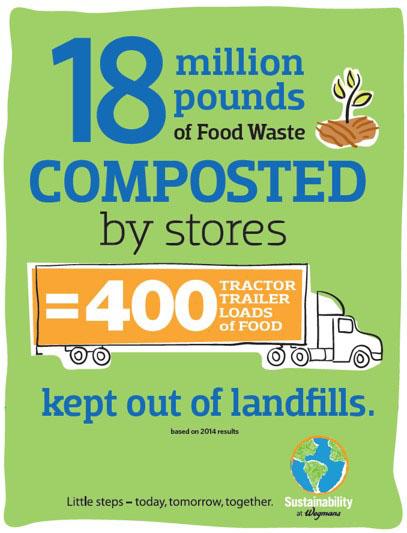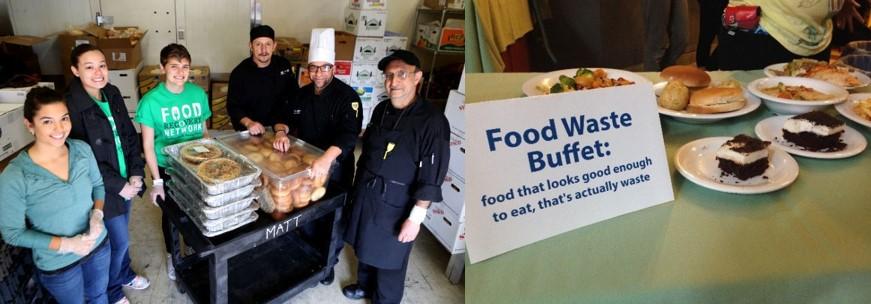About the 2015 Food Recovery Challenge Regional Award Winners
Many of the 2015 Food Recovery Challenge regional award winners shared details and quotes about their wasted food prevention and diversion activities and about their awards with the EPA. Read about their accomplishments and how they achieved them.
On this page
- University of New Hampshire
- Kupu Hawai’i
- Berkshire Health Systems (BHS)
- Rochester Institute of Technology
- Wegmans
- Northern Arizona University
- University of Arizona
- City of Cupertino, California
- Disneyland Resort
- Food Forward
- University of California, Davis
- California State University, Northridge
- MGM Resorts CityCenter
- Nestlé USA
University of New Hampshire
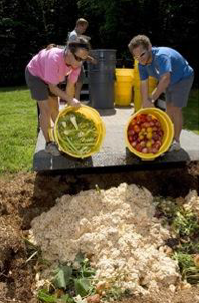
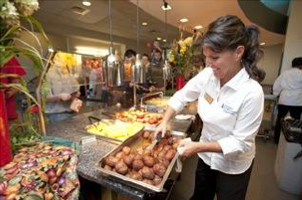
University of New Hampshire (UNH) Dining’s composting efforts kept almost 212 tons of food waste out of landfills in 2014 alone, up from about 198 tons in 2013. Since launching a composting program, a collaboration between UNH Dining, College of Life Sciences and Agriculture, and the UNH Sustainability Institute in 1998, UNH has diverted more than half a million pounds of food waste from the waste stream and converted it to nutrient-rich compost, which goes to campus research farms. The compost process closes the food cycle and returns the valuable soil enriching nutrients in food and other organic waste to the soil. When returned to the land, finished compost improves soil texture and water-holding capacity, and increases nutrient levels. All UNH dining halls have installed food pulpers to pulverize food waste into small bits and extract liquid, a process that helps to facilitate the composting process. UNH Dining also manages the pickup and delivery of compost from all dining halls and two university maintained apartment complexes, the Gables and the Woodsides. The whole operation involves student employees, which adds an educational component to the program, along with campaigns encouraging students to minimize food waste. Additionally, UNH Dining has implemented “trayless” dining in two of its dining halls, The Stillings Dining Hall and Philbrook Dining Hall. Finally, UNH is also currently looking at opportunities to expand the campus composting operation further.
Kupu Hawai’i
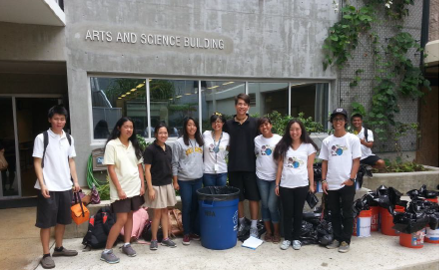
“Kupu Hawai’i is a 501(c)(3) organization in Honolulu, Hawai’i. Kupu provides service learning programs in industries like conservation, renewable energy, agriculture, and sustainability….Kupu aims to teach youth vital work skills as well as leadership, responsibility and learning to serve the community, incorporating vocational training, educational degree achievement and service learning.”
In 2013, Kupu Hawaiˈi signed up the first Food Recovery Challenge (FRC) participants in Hawai'i, and in 2014 Kupu became an official FRC endorser. During this time, Kupu has convened food waste stakeholders throughout Honolulu County in order to increase collaboration and momentum around reduction and diversion.
As an endorser, Kupu has provided a range of support for our partners. Kupu's 2014-2015 Food Waste Fellow, Cyrus Howe, helped several community partners reach their food waste reduction and recovery goals. Cyrus signed up 8 organizations into the 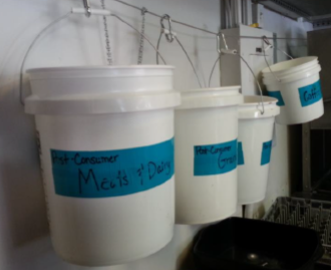 Food Recovery Challenge, supported a baseline food waste audit for Lanikai Elementary, designed and executed a baseline audit for Hawaii Baptist Academy, and designed a food waste diversion system for The Nook: Neighborhood Bistro. Cyrus also worked closely with Pearl City High School to record the impacts of its food waste diversion efforts and support its diversion operations.
Food Recovery Challenge, supported a baseline food waste audit for Lanikai Elementary, designed and executed a baseline audit for Hawaii Baptist Academy, and designed a food waste diversion system for The Nook: Neighborhood Bistro. Cyrus also worked closely with Pearl City High School to record the impacts of its food waste diversion efforts and support its diversion operations.
"Hawai'i is seeing a lot of momentum around food waste reduction and diversion and the FRC has been a great vehicle to recognize some of those efforts. As an island state, the impacts of climate change will be devastating to human and environmental health in Hawai'i. Reducing and diverting food waste is part of our kuleana (or responsibility) to mālama honua (take care of the world around us) by addressing climate change head on, feeding people (not landfills or incinerators) our quality leftovers, and minimizing the upstream resource use footprint by working to reduce the amount of food wasted,” said Nicole Chatterson, Rewarding Internships for Sustainable Employment’s Program Manager.
Berkshire Health Systems (BHS) - Joins Food Recovery Challenge for a Better Future
Berkshire Health Systems (BHS) Food Services Department is participating in a national movement, the Food Recovery Challenge, to reduce wasted food and its associated environmental impacts over the entire life cycle, implementing the Sustainable Management of Food Approach, a program of the Environmental Protection Agency. The goal of the program is to help change the way our society protects the environment and conserves resources for future generations.
The program is in place at Fairview Hospital and Berkshire Medical Center (BMC) and will be launched in the coming months at BMC North Adams.
In 2015, Fairview Hospital composted over 30 tons and Berkshire Medical and its Hillcrest campus composted over 84 tons of food waste and paper. Both BMC sites and Fairview partner with 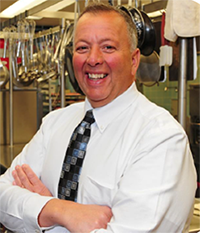 Roger Knysh, Director of Food ServicesEmpire Zero, a company that picks up compost bins on a weekly basis and brings them to Holiday Farm in Dalton. Fairview Hospital also donated over 430 pounds of leftover prepared food to a local homeless shelter.
Roger Knysh, Director of Food ServicesEmpire Zero, a company that picks up compost bins on a weekly basis and brings them to Holiday Farm in Dalton. Fairview Hospital also donated over 430 pounds of leftover prepared food to a local homeless shelter.
According to Roger Knysh, Director of Food Services, the BHS community has been supportive of the changes and the results have been significant. “Building on the familiar concept of "Reduce, Reuse, Recycle,” this approach recognizes the impacts of the food we waste. Our goal is to improve our environmental sustainability practices at BHS and have the additional effect of having our employees learn these techniques to employ in their own personal consumption habits,” he said.
Rochester Institute of Technology
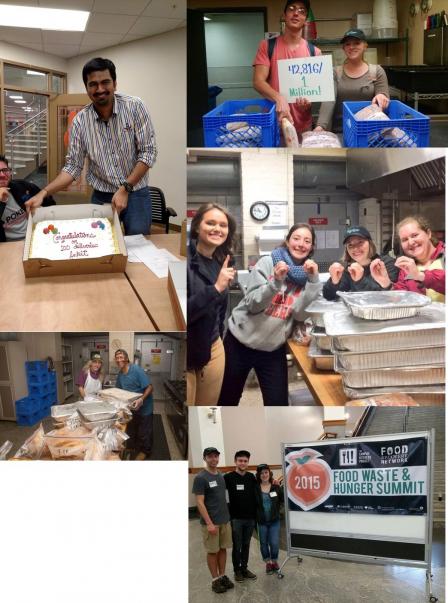 Recover Rochester is the Rochester Institute of Technology’s (RIT) chapter of the Food Recovery Network. It works to reallocate overproduced food from campus to areas of need. Food Day was an informative event in October 2015 to raise awareness about food insecurity. Below are thoughts from RIT students and staff that participate in on-campus food recovery efforts:
Recover Rochester is the Rochester Institute of Technology’s (RIT) chapter of the Food Recovery Network. It works to reallocate overproduced food from campus to areas of need. Food Day was an informative event in October 2015 to raise awareness about food insecurity. Below are thoughts from RIT students and staff that participate in on-campus food recovery efforts:
“On one of my first deliveries, I witnessed a group of people at the meal center holding hands in a circle praying for the food that we had donated. It feels really good to know that I am making such a positive impact on the Rochester community.”
“Food Day was my first event of the semester with Recover Rochester, and I remember it being scheduled for a school night. It was very dark outside, and we had very little donations, but it was a great learning experience. I still remember that as my first memory of the club, and it definitely helped me build relationships and learn more about the great work that can be done through this club.”
“The benefit of Recover Rochester is two-fold: not only do you get to serve your community, but the organization opens your eyes to the amount of food that could be wasted.”
Wegmans
Jason Wadsworth, Sustainability Manager at Wegmans shared the information below with EPA about its wasted food reduction efforts:
"Last year, I wrote about Exit how 40% of the food produced in America is wasted, and how Wegmans works to reduce, reuse and recycle to help make a difference in this area. I also mentioned our partnerships with two local dairy farms in NY State, turning food scraps into renewable energy. This Earth Day, we put together this really cool video Exit to help tell the story of how 11 of our Rochester, NY stores have been able to turn over two and a half million pounds of food scraps (otherwise destined for the landfill) into clean renewable energy. One of our Buffalo stores is also piloting the program and more will follow. Four Syracuse stores will begin a pilot in May. By early 2016, we hope that 32 of our stores in New York will be participating in this program.
- Food scraps from our store culinary operations and cut fruit/veggie bars (trimmings, rinds, skins) are captured in specially designed collection totes in the departments.
- When full, totes are wheeled to collection areas on the back dock of the store and swapped for an empty clean tote.
- Several times per week our food scraps recycling vendor stops at our stores, empties the totes into their dump truck, cleans the totes, and then heads to the dairy farm.
- On the farm, food scraps are mixed with other on-farm waste and loaded into the digester.
- Microbes in the digester break down the waste and convert it to biogas, where it is then collected and stored in a large round tank.
- Biogas is then sent to a generator and turned into electricity for the farm.
- All of the farm's electric needs are provided by the digester and any excess is sold back to the electric grid.
It is truly remarkable what this group of stores has been able to achieve. What I love about this program is that it embodies all three pillars of sustainability here at Wegmans Exit; it’s good for the environment, it’s good for our people and it’s good for our business."
Northern Arizona University
Northern Arizona University (NAU) shared the information below with EPA about its wasted food reduction efforts:
"NAU Campus Dining continues to reduce campus food waste and made new strides during the 2014-2015 academic year. In line with the university’s Climate Action Plan, Dining regularly maintains waste reduction tracking system LeanPath, the on-campus compost program and supports campus waste reduction initiatives such as BYOC: an educational campaign to encourage reusable containers with an incentive from Dining of a 50 cent discount for bringing your own mug and football tailgate recycling. Highlights from the 2014-2015 academic year include the launch of The Food Recovery Network NAU Chapter, NAU Dining presenting for EPA’s Reducing Wasted Food & Packaging Toolkit webinar series, winning an on campus funding award for post-consumer composting machinery, and NAU Athletics participation in the EPA Game Day Challenge fall 2015.
In October 2014, NAU became the first Arizona college or university chapter of the Food Recovery Network. Through student volunteers, NAU runs donations five days a week to two local food banks in the Flagstaff community. The Food Recovery Network donated over 8,000 pounds of food its first year.
The Office of Sustainability, NAU’s Waste Minimization Team, Dining and Athletics coordinated the first NAU Green Game for the EPA Game Day Challenge for the October 31, 2015 home game, named “Hallo-Green Game.” Concessions utilized compostable items and Eco-Reps helped fans sort waste properly between, recycling, compost and landfill."
University of Arizona
Below is a description from the Associated Students of the University of Arizona (ASUA) Compost Cats-City of Tucson-San Xavier Co-op Farm partnership program about their wasted food reduction successes:
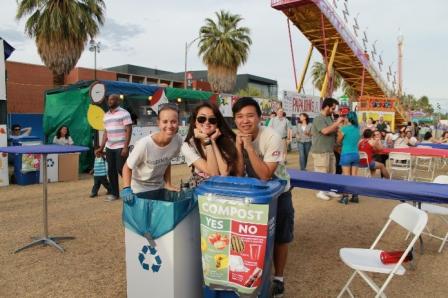 "The Associated Students of the University of Arizona (ASUA) Compost Cats-City of Tucson-San Xavier Co-op Farm partnership program is excited to report diversion of over 3.4 million pounds of organic materials - food waste, landscape debris, and manure - from landfills in 2015. This February marks the fifth year since the Compost Cats began collecting organic waste in the Tucson community, and with another successful year completed, the total amount of material diverted since 2011 is approximately 10.4 million pounds!
"The Associated Students of the University of Arizona (ASUA) Compost Cats-City of Tucson-San Xavier Co-op Farm partnership program is excited to report diversion of over 3.4 million pounds of organic materials - food waste, landscape debris, and manure - from landfills in 2015. This February marks the fifth year since the Compost Cats began collecting organic waste in the Tucson community, and with another successful year completed, the total amount of material diverted since 2011 is approximately 10.4 million pounds!
The ASUA Compost Cats Exit started with a student idea to do something better with food scraps from the student union than send them to the landfill, but who knew that in only five years, a simple student idea could grow into a tri-institutional partnership program that takes in material from across Tucson, southern Arizona, and beyond and turns it into a valuable resource? Probably no one envisioned the full potential then, but without our student government, ASUA, having the willingness to nurture and shelter the idea, and the UA Student Unions’ willingness to try it out before anyone else did, we would never have sprung up out of the ground. Today, the success of the program is due to the City of Tucson’s willingness to create an organics collection program Exit and the Tohono O’odham Nation’s San Xavier Co-operative Farm Exit being willing to host us and share equipment. Since our partnership with the City of Tucson began in July 2014, our presence within the Tucson community has increased exponentially, with the U.S. Environmental Protection Agency recently recognizing our 1232 percent growth rate from 2013 to 2014 with a Certificate of Appreciation recognizing our demonstrated commitment to improving sustainable food management practices.
The City’s commercial collection service currently serves 38 Tucson businesses, with all collections coming to the Compost Cats for conversion into compost. And that number is growing fast, with at least 20 more local grocery stores and schools set to join by April. Grocery stores in Tucson produce an average of about 15,000 pounds of food waste per month, but now most of that won’t be waste at all. Instead, it gets transformed into a valuable soil amendment that can enrich local food growing soils to help grow more food. By the close of 2015, the City of Tucson brought 1.35 million pounds of food waste to the operation site at San Xavier, an impressive feat that Compost Cats couldn’t have accomplished on its own. Without our site and partners at San Xavier, we’d never have had room to hold all that material to begin with.
The ASUA Compost Cats continue to demonstrate that it is possible for students to play leading roles in solving thorny difficult environmental and social problems and uniting seemingly disparate groups toward common goals. The success of the Compost Cats-City of Tucson-San Xavier Co-op Farm program is rooted in the meaningful partnerships nurtured between all three partners and the wider community we serve."
Ben Champion, Director, Office of Sustainability said, “Compost Cats is a prime example of the power of student leadership in tackling our greatest societal challenges toward a sustainable future. The University of Arizona is extremely proud of its Compost Cats in making such a large and rapidly growing impact on reducing southern Arizona’s food waste.”
Chester F. Phillips, Compost Cabs Project Director shared, “Fran LaSala, Environmental Manager with City of Tucson Environmental Services really coined the best catchphrase for our effort. He calls it “3-2-1: Three Governments, Two Nations, One Goal”. The goal is ending food waste in southern Arizona and turning what once was waste back into a resource for local soils. Broad collaboration is how we move forward and solve some of the big social and environmental problems we’re facing, and this partnership is proof that it works.”
City of Cupertino, California
Below is information from regional award winner, the City of Cupertino, about its food recovery efforts:
"Since the City of Cupertino, California received EPA’s Food Recovery Challenge Innovation Award in December 2013, the City has continued to pursue its goal to remove food and organic waste from the landfill and bring it home to the community in the form of free compost.
Recognizing that organics collection was an essential step towards achieving diversion goals, Cupertino adopted an ordinance ahead of State AB 1826, mandating commercial organic waste collection. As a result of numerous “knock and talk” visits, sixty-four businesses voluntarily separated organics. After the first two ordinance implementation cycles, in September 2015 and January 2016, 108 business accounts are now composting their organic waste.
Most recently, the City and its garbage and recycling hauler, Recology, have worked closely with businesses to reduce contamination, making clean organics a priority. In 2015 alone, 4,111 tons of commercial food waste was saved from the landfill. Cupertino residents are encouraged to help the effort by placing their food scraps and organic products in the green bin when they’re dining out and by putting their food waste in their yard waste carts at home.
To enhance its pursuit of zero waste, Cupertino recently joined Santa Clara County’s Recycling and Waste Reduction Committee’s Regional Food Rescue Group, which is aggressively dedicated to expanding regional food donation efforts and ensuring that surplus quality food is delivered to community food organizations for those in need."
Disneyland Resort
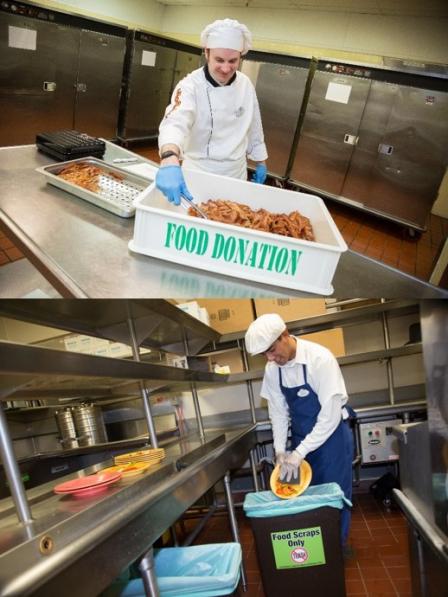 Below is a description that Disneyland Resort shared with EPA about their wasted food reduction efforts:
Below is a description that Disneyland Resort shared with EPA about their wasted food reduction efforts:
"Disneyland Resort has several creative food recovery programs that promote social and environmental responsibility. In 2014, a food donation program was launched at the Hotels of the Disneyland Resort in which more than 25,000 pounds of unused prepared food from restaurants and banquets was collected for donation to people in need. Additionally, more than 100,000 pounds of packaged food was donated to local food banks last year.
Each month, approximately 400,000 pounds of food scraps are collected from resort restaurants for conversion into feed nutrients for local farm animals. Used cooking oil is processed into biodiesel used to power multiple attractions, saving more than 150,000 gallons of petroleum diesel each year."
Food Forward
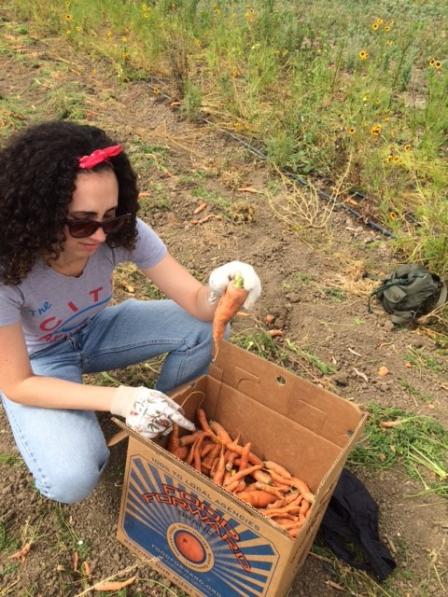 Regional award winner, Food Forward, shared this with EPA about their Food Recovery Challenge successes:
Regional award winner, Food Forward, shared this with EPA about their Food Recovery Challenge successes:
"Food Forward's produce recovery efforts in 2014 and 2015 saw immense growth. In 2014, Food Forward's work ensured that 4.7 million pounds of perfectly good fruits and vegetables did not go to waste and, in 2015, that number shot up to 8.8 million pounds of produce recovered. Not only is that food being saved from the landfill, it is then being diverted to 300 hunger relief agencies across Southern California.
This success was due to Food Forward's Backyard Harvest, Farmers Market Recovery and Wholesale Recovery Programs and, of course, the volunteers who contribute to the more than 120 produce recovery events per month. On average, 165,000 pounds of fresh fruits and vegetables are rescued each week from backyard fruit trees, farmers markets and Los Angeles's Downtown Wholesale Produce Market. With a 35 percent increase in food recovery expected in 2016, Food Forward is aiming to provide 12 million pounds of produce to those in need."
"It's so great to see the EPA and U.S. government jump to lead the charge around reducing food waste. We felt great about being early adopters of the Food Recovery Challenge as it aligns with our daily work to reduce waste while feeding those in need, and we look forward to a long and fruitful partnership with EPA and their team," said Rick Nahmias, Founder/Executive Director of Food Forward.
University of California (UC), Davis
Below is a description from UC Davis about their wasted food reduction efforts:
"UC Davis contributed to another successful Food Recovery Challenge by diverting over 635 tons of food waste in 2014-2015."
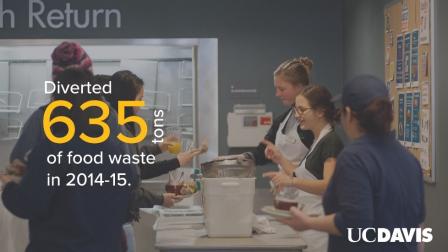 “It’s wonderful for UC Davis to be recognized by the EPA for sustainable food management practices. Up to 40 percent of the food bought in the U.S. ends up in a landfill, and our efforts – like food donation, composting, anaerobic digestion and more efficient food handling and preparation – help tackle this waste,” said Camille Kirk, Interim Assistant Vice Chancellor of Environmental Stewardship and Sustainability Exit.
“It’s wonderful for UC Davis to be recognized by the EPA for sustainable food management practices. Up to 40 percent of the food bought in the U.S. ends up in a landfill, and our efforts – like food donation, composting, anaerobic digestion and more efficient food handling and preparation – help tackle this waste,” said Camille Kirk, Interim Assistant Vice Chancellor of Environmental Stewardship and Sustainability Exit.
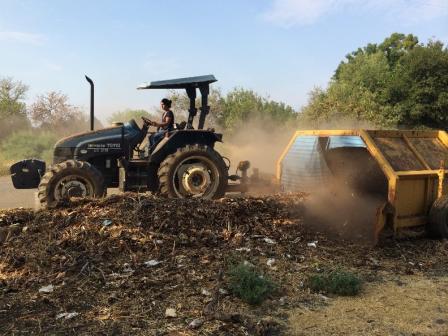 "The campus collects pre- and post-consumer food waste in its food service areas, as well as post-consumer food waste in over a dozen other buildings. Food waste is either taken to the campus anaerobic biodigester, to a commercial composting facility north of Davis, or to the student-managed Project Compost windrow on campus. Uneaten food from the dining halls is also recovered and donated through a local chapter of the Food Recovery Network. Students are an integral part of the food recovery practices on campus. The campus achieved an overall waste diversion rate of 79 percent (including construction and demolition materials) during 2014-15."
"The campus collects pre- and post-consumer food waste in its food service areas, as well as post-consumer food waste in over a dozen other buildings. Food waste is either taken to the campus anaerobic biodigester, to a commercial composting facility north of Davis, or to the student-managed Project Compost windrow on campus. Uneaten food from the dining halls is also recovered and donated through a local chapter of the Food Recovery Network. Students are an integral part of the food recovery practices on campus. The campus achieved an overall waste diversion rate of 79 percent (including construction and demolition materials) during 2014-15."
California State University, Northridge (CSUN)
Below is a description from CSUN about their Food Recovery Challenge successes:
"Since CSUN Dining began participating in the EPA Food Recovery Challenge, we have continued to reduce food waste and increase food recovery. The challenge has also motivated us to find new and creative ways to partner with our campus to do more. In 2015, CSUN Dining has diverted over 35,000 pounds of pre-consumer food waste. This was made possible by expanding the compost program and working closely with the Institute for Sustainability and CSUN Facilities Planning department. By partnering with the CSUN Chapter of the Food Recovery Network, this past year has allowed for over 815 pounds of food to be recovered and donated to local non-profits.
With the University’s new waste hauler and the continued implementation of various sustainability programs, 2016 promises to be another benchmark year for CSUN. Through the new waste hauler contract, CSUN Dining divert both pre- and post-consumer food waste. Our participation in the EPA Food Recovery Challenge is a commitment in concert with the campus’ priority on sustainability. CSUN Dining looks forward to continuing to make a difference on campus, in the community, and globally."
MGM Resorts CityCenter
MGM Resorts International shared the details below with EPA about their food recovery successes:
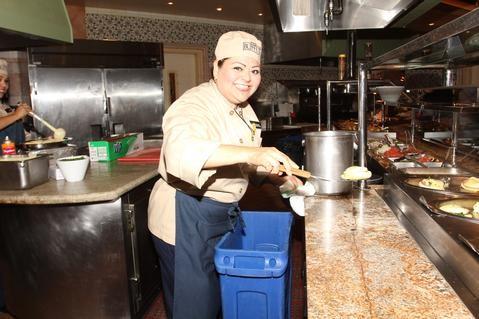 "MGM Resorts International is dedicated to helping protect our planet. We are passionate about greening our resorts and our approach to environmental responsibility encourages solutions that continuously improve our operations and our products. We believe that a greener business is a better business, that through our actions we can have a positive impact on our visitors, employees, communities, and the planet. We call this the MGM Resorts Green Advantage.
"MGM Resorts International is dedicated to helping protect our planet. We are passionate about greening our resorts and our approach to environmental responsibility encourages solutions that continuously improve our operations and our products. We believe that a greener business is a better business, that through our actions we can have a positive impact on our visitors, employees, communities, and the planet. We call this the MGM Resorts Green Advantage.
A key component of the Green Advantage is our recycling and waste management program. We have deployed comprehensive recycling efforts at all of our properties. As one of the world’s most prominent environmentally responsible developments, the CityCenter resort in the heart of the Las Vegas Strip exemplifies best practices in recycling and waste management.
Our waste management program at CityCenter has been designed to divert a wide variety of materials from landfill while seeking responsible, innovative solutions for handling those that are non-recyclable. The CityCenter Campus is committed to recycling commodities such as paper, construction material, glass, oil, metal, plastic, unique materials such as batteries, carpet cork and electronics, as well as food.
Through strategic partnerships with nonprofits, contracted recycling experts, and on property management we have implemented innovative solutions and trainings that have allowed us to achieve a total average diversion rate of approximately 60 percent. A significant portion of this total average diversion rate is attributed to efforts in managing food waste. In 2014 and 2015, CityCenter diverted a combined total of 9,339 tons from landfill. Efforts in reducing and recycling food waste will continue to be a critical function of the Green Advantage program at CityCenter as well as throughout the properties of MGM Resorts International."
Nestlé USA
Regional award winner, Nestlé USA, shared with EPA the description below about their wasted food reduction efforts:
"Nestlé USA announced in April 2015 that all of its 23 factories – spanning confections, dairy, frozen and refrigerated meals, ice cream, baking ingredients, and beverages – were landfill-free, contributing zero waste for disposal. This important milestone supports Nestlé USA’s commitment to environmentally sustainable business practices to protect future generations."
“We are incredibly proud of the effort it took to accomplish this goal,” said Paul Grimwood, Chairman and CEO Nestlé USA. “This is an especially noteworthy achievement given the breadth and complexity of our manufacturing operations across a variety of categories.”
"As part of this effort, Nestlé USA is continually looking for new ways to reuse, recycle and recover energy when disposing of manufacturing by-products. The company’s current efforts include composting, recycling, energy production, and the provision of safe products for animal feed."

